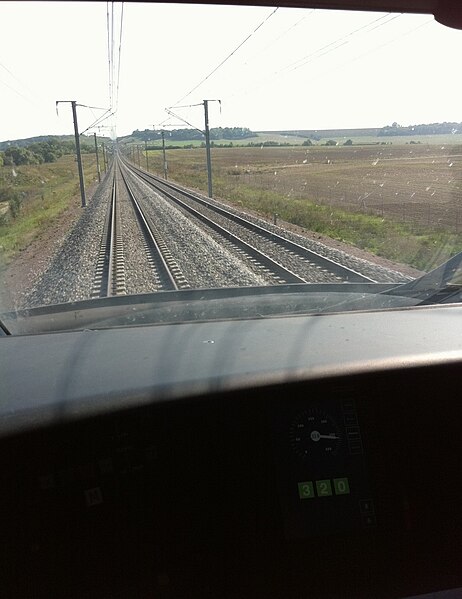The TGV POS is a TGV train built by French manufacturer Alstom which is operated by the French national rail company, the SNCF, in France's high-speed rail lines. It was originally ordered by the SNCF for use on the LGV Est, which was put into service in 2007. POS is an abbreviation of Paris-Ostfrankreich-Süddeutschland, the route of the LGV Est.
SNCF TGV Lyria 4403 at Satigny running from Genève to Paris Gare de Lyon
View from the cab aboard a TGV POS at 320 km/h
TGV POS at Strasbourg in September 2010
The TGV is France's intercity high-speed rail service, operated mainly by SNCF. SNCF worked on a high-speed rail network from 1966 to 1974 and presented the project to President Georges Pompidou who approved it. Originally designed as turbotrains to be powered by gas turbines, TGV prototypes evolved into electric trains with the 1973 oil crisis. In 1976 the SNCF ordered 87 high-speed trains from Alstom. Following the inaugural service between Paris and Lyon in 1981 on the LGV Sud-Est, the network, centered on Paris, has expanded to connect major cities across France and in neighbouring countries on a combination of high-speed and conventional lines. The TGV network in France carries about 110 million passengers a year.
TGV Sud-Est (left), the first equipment used on the service; and TGV 2N2 (right), the newest equipment used on the service, at Gare de Lyon station, 2019
Service to Geneva, Switzerland, 1982
A TGV Duplex in Héricourt, Haute-Saône on the LGV Rhin-Rhône
TGV service (partly on classic lines) to Bourg-Saint-Maurice in the French Alps is popular in the winter season.







